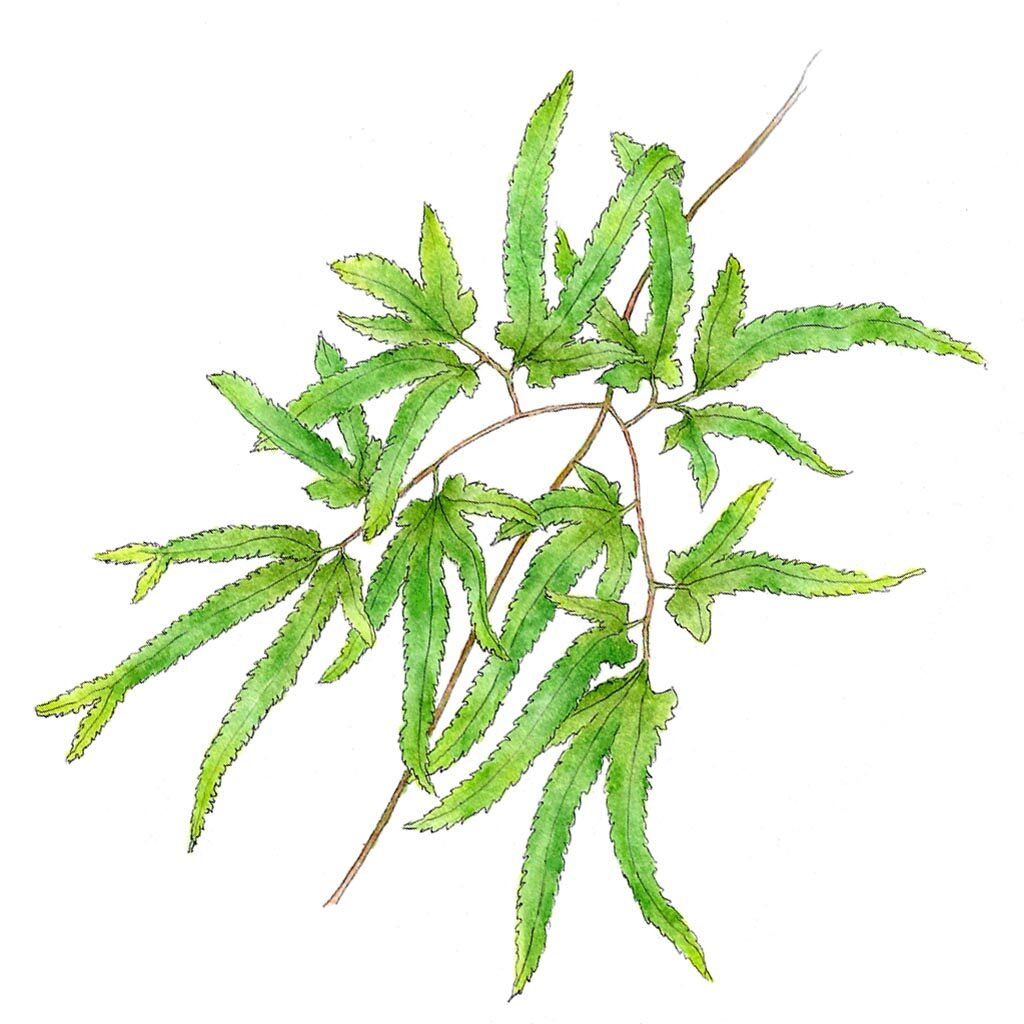Wire Wis

This interesting medicinal plant is a climbing fern, native from Mexico to Brazil. It is sometimes used to tie and fasten things, in place of string or wire, when out in the bush. Tough stuff! It’s also known as wire vine, bejuco de alhambre, xix-el-ba, and alambre xiv, but Belizean friends here refer to it as wire wis, so that’s what I’ll call it.
Wire wis grows at the edges of forest openings, along roadsides, and in disturbed areas, and will spread out along the ground although if it finds anything to climb it will do so, twining around its host until it reaches a height of several yards/meters. Interestingly, the wiry “vine” part is actually the mid-rib of a single hugely long leaf. The plant shown in the illustration is just part of one leaf, and it’s a young one. Older plants may have little finger-like extensions along the edges of the fronds which contain spores. You can find more information about this interesting fern and its reproduction here.
Belizeans use wire wis as bush medicine for skin fungus, rashes and sores – twice a day soaking the affected area in a hot bath made by boiling up a double handful of the leaves in a quart of water for 10 minutes. For headache, a poultice made of the leaves is applied to the area that hurts.
In Mexico and Brazil wire wis is called Hierba de la Vibora, or Viper Plant, and is commonly used as a medicine for snakebite and scorpion stings. One eats the fronds, or boils the root and mixes it with aguardiente, an acoholic beverage. The word aquardiente, by the way, is a combination of the two Spanish words, agua (water) and ardiente (burning), which translate roughly to firewater. I don’t know whether they drink it or soak the scorpion-stung or snake-bit area in it, though. Maybe both.
Additionally, the whole wire wis plant is sometimes boiled up to make a tea to treat diarrhea, dysentery, and various female diseases.
It’s a really pretty plant, and was sacred to the Maya, being used as an altar decoration during ceremonies. Many of the above uses are described in Rainforest Remedies, One Hundred Healing Herbs of Belize, an excellent book by Rosita Arvigo and Michael Balick, illustrated by Laura Evans.